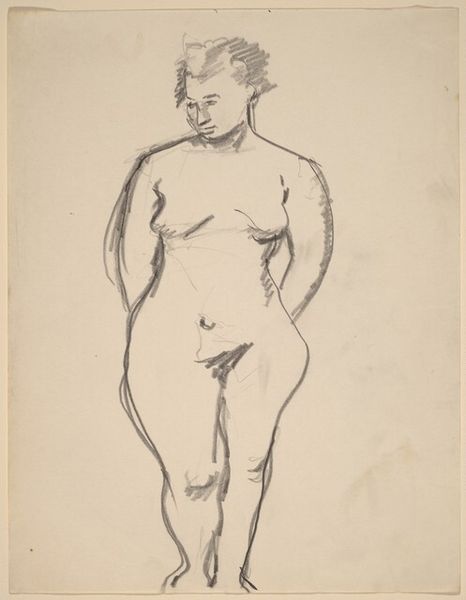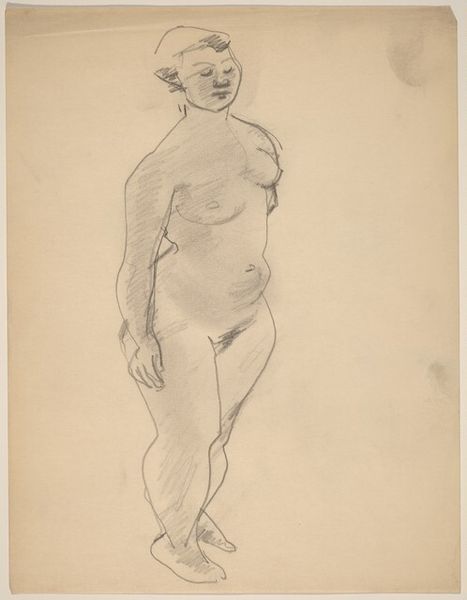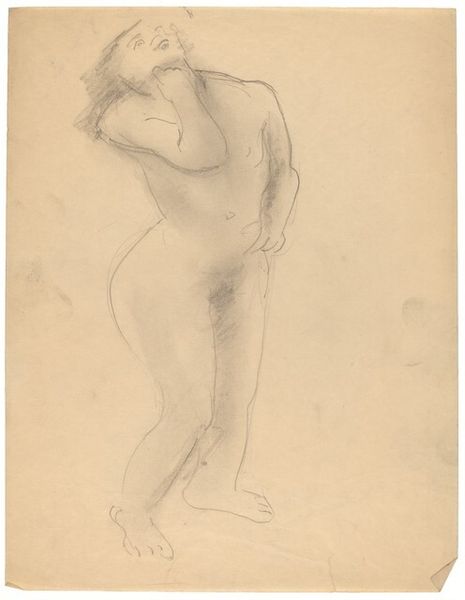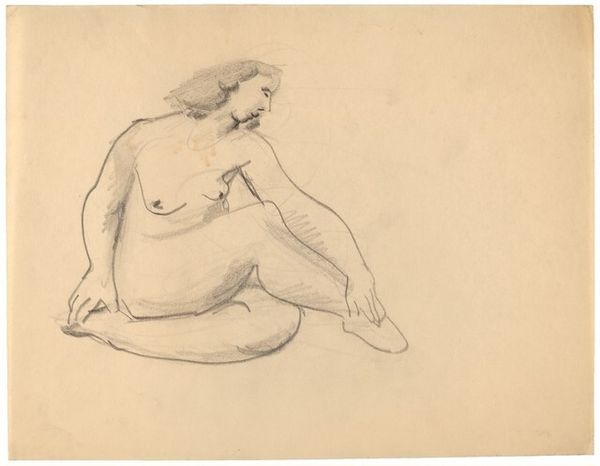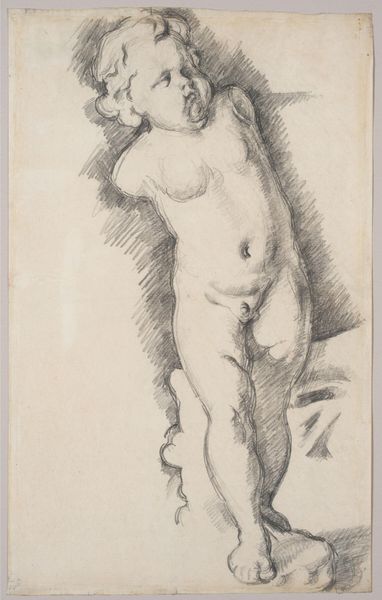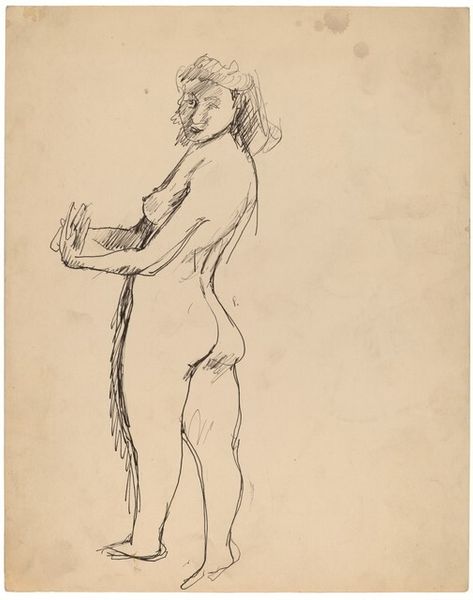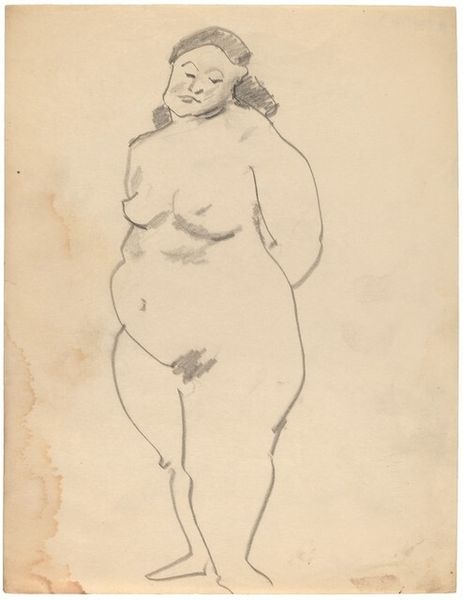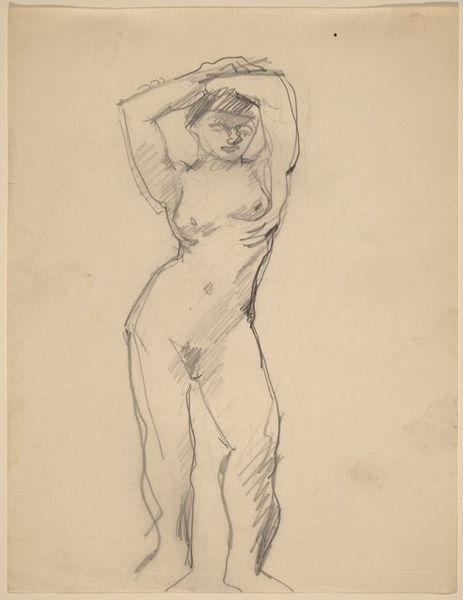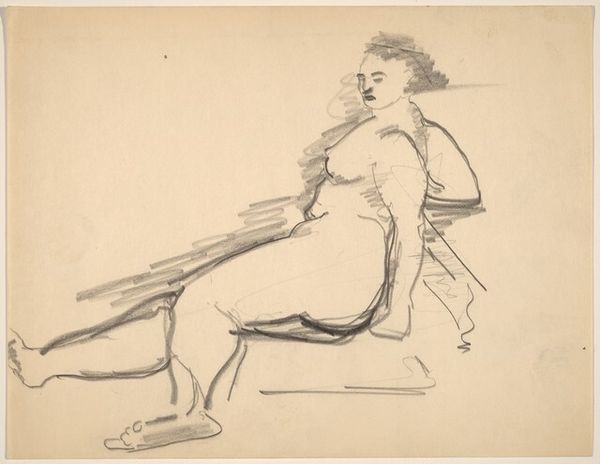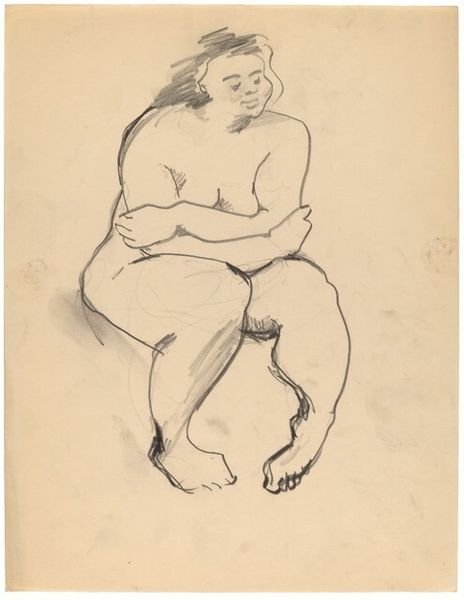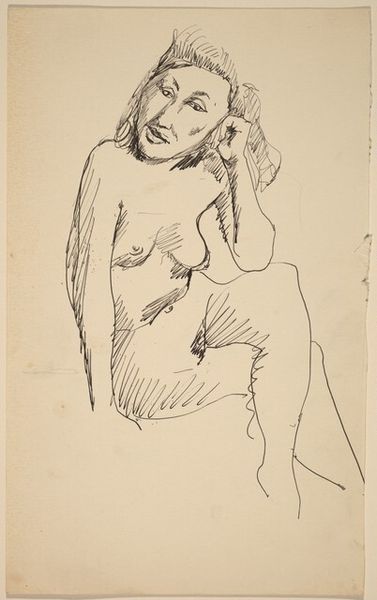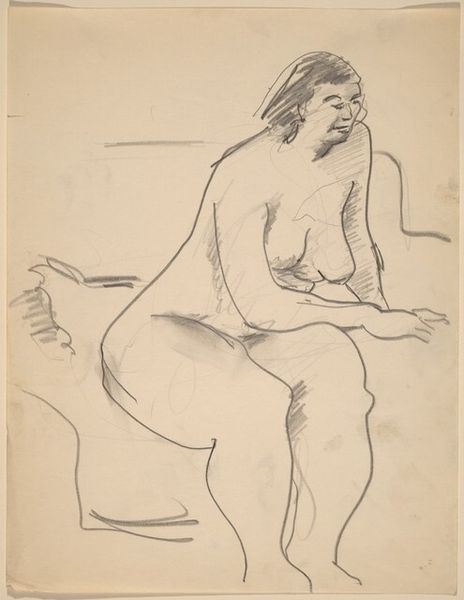![Seated Nude with Head Turned Right [recto] by Mark Rothko](/_next/image?url=https%3A%2F%2Fd2w8kbdekdi1gv.cloudfront.net%2FeyJidWNrZXQiOiAiYXJ0ZXJhLWltYWdlcy1idWNrZXQiLCAia2V5IjogImFydHdvcmtzLzk2ZTNiNDZiLWU4YzctNGVhNi05NTg3LTBjNDI4MmViMDA0OC85NmUzYjQ2Yi1lOGM3LTRlYTYtOTU4Ny0wYzQyODJlYjAwNDhfZnVsbC5qcGciLCAiZWRpdHMiOiB7InJlc2l6ZSI6IHsid2lkdGgiOiAxOTIwLCAiaGVpZ2h0IjogMTkyMCwgImZpdCI6ICJpbnNpZGUifX19&w=1080&q=75)
drawing, pencil
#
drawing
#
figuration
#
pencil drawing
#
pencil
#
nude
#
modernism
Copyright: National Gallery of Art: CC0 1.0
Editor: So here we have "Seated Nude with Head Turned Right," a pencil drawing by Mark Rothko. It's quite a departure from his later color field paintings, isn't it? I’m struck by the raw simplicity of the lines; it feels almost unfinished. What can you tell me about it? Curator: The seeming simplicity is exactly what demands attention. Pencil, paper, a model. These are basic tools, accessible and inexpensive. Rothko isn’t engaging in any kind of artifice here. He’s showing us the labour, the act of seeing and rendering. The pressure of the pencil, the angle, even the type of paper—these become part of the narrative. Editor: Narrative, in a nude? Curator: Yes, the narrative of production. Where was this drawing made? Who was the model? Was this a study for something larger? All those things influence what the final work becomes, no? The use of line – economical, almost hesitant in places – reveals the process. It isn't about idealised beauty, it's a record of a material interaction. The starkness really shifts the power dynamic between artist and subject. Editor: That's a perspective I hadn't considered. So it's about the choices and processes involved, not just the image itself. Curator: Precisely. And that ties it to a broader material understanding of art history, one that rejects a purely aesthetic interpretation in favour of engaging with the socio-economic realities embedded within it. We tend to think of drawing as an innate talent, when it fact it's a skill requiring training and labor, the type and extent of which determine the aesthetic product. Editor: Fascinating. I'll definitely look at preliminary drawings in a new light now. Thanks! Curator: Likewise, thinking about these materials in an elemental form grounds me, too!
Comments
No comments
Be the first to comment and join the conversation on the ultimate creative platform.

